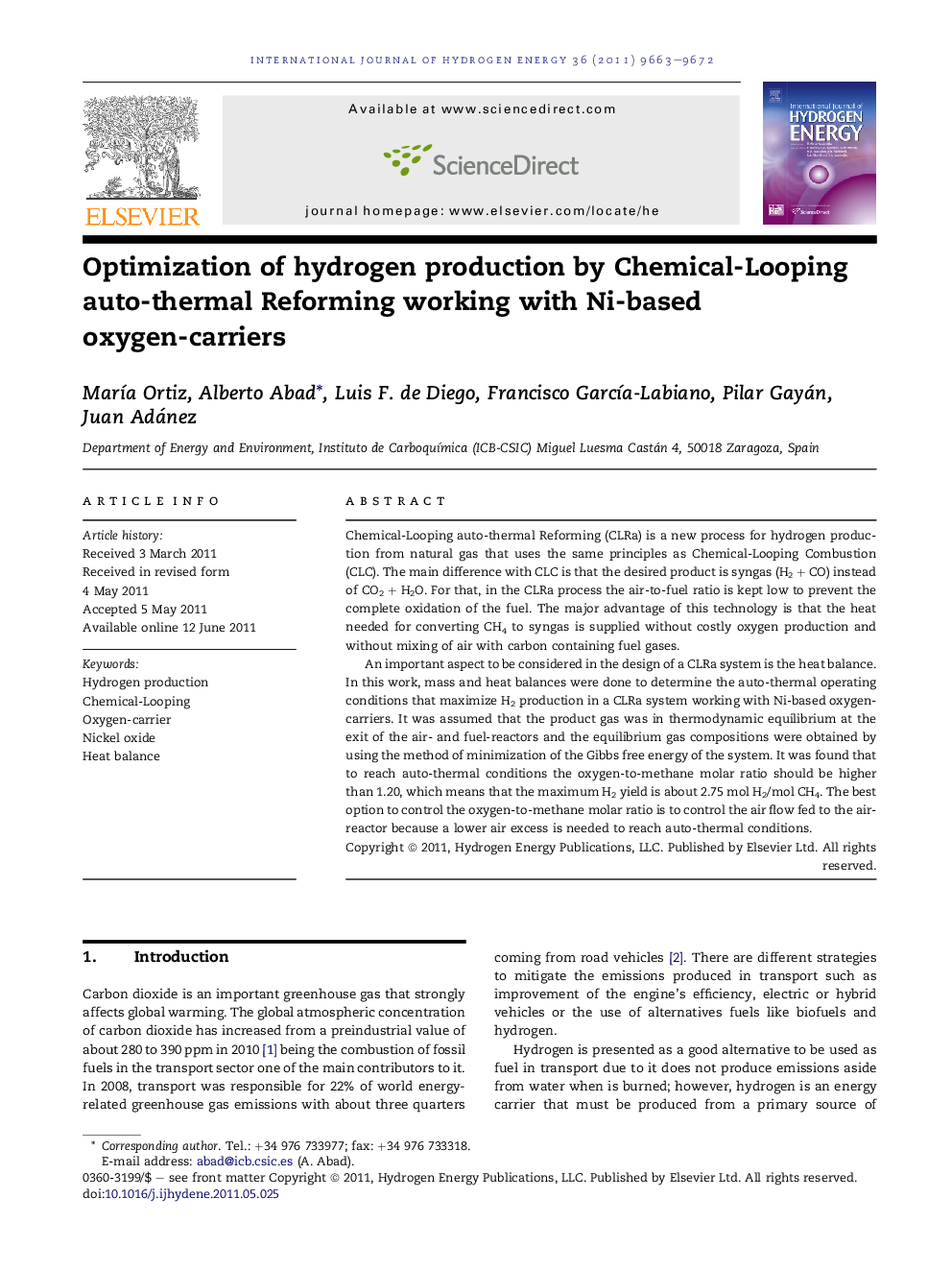| Article ID | Journal | Published Year | Pages | File Type |
|---|---|---|---|---|
| 1278906 | International Journal of Hydrogen Energy | 2011 | 10 Pages |
Chemical-Looping auto-thermal Reforming (CLRa) is a new process for hydrogen production from natural gas that uses the same principles as Chemical-Looping Combustion (CLC). The main difference with CLC is that the desired product is syngas (H2 + CO) instead of CO2 + H2O. For that, in the CLRa process the air-to-fuel ratio is kept low to prevent the complete oxidation of the fuel. The major advantage of this technology is that the heat needed for converting CH4 to syngas is supplied without costly oxygen production and without mixing of air with carbon containing fuel gases.An important aspect to be considered in the design of a CLRa system is the heat balance. In this work, mass and heat balances were done to determine the auto-thermal operating conditions that maximize H2 production in a CLRa system working with Ni-based oxygen-carriers. It was assumed that the product gas was in thermodynamic equilibrium at the exit of the air- and fuel-reactors and the equilibrium gas compositions were obtained by using the method of minimization of the Gibbs free energy of the system. It was found that to reach auto-thermal conditions the oxygen-to-methane molar ratio should be higher than 1.20, which means that the maximum H2 yield is about 2.75 mol H2/mol CH4. The best option to control the oxygen-to-methane molar ratio is to control the air flow fed to the air-reactor because a lower air excess is needed to reach auto-thermal conditions.
► The auto-thermal operating conditions that maximize H2 production in CLRa with Ni-based materials were determined. ► Low Ni-content materials could be preferred in a CLRa system. ► To reach auto-thermal conditions an excess of oxygen was needed in relation to stoichiometric conditions. ► H2 production was maximized by controlling the oxygen excess with the air flow fed to the air-reactor. ► At optimum conditions, 2.75 mol H2/mol CH4 could be produced being CO2 unmixed with nitrogen.
